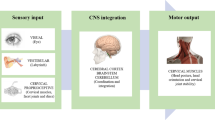Summary
X-ray examinations of the wrists, the elbows and the shoulders were carried out on 67 vibration-exposed foundry workers and on 46 comparable referents performing heavy manual work. Both groups had a mean age of 39.6 years. Musculoskeletal symptoms, such as arthralgias of the wrist and elbow joints, muscle pain and decreased muscular force, were found to be significantly increased in the chipping and grinding workers compared with the referents. After adjustment for age, the prevalence of cysts in the metacarpal and carpal bones was almost the same in the two groups, whereas radiological signs of osteoarthritis in the wrist joint were more frequent among the vibration-exposed workers (P < 0.025). The overall prevalence of radiographic abnormalities in the elbow joint was higher in the vibration group than in the reference group (P < 0.025). Olecranon spurs were observed in 50.7% of the exposed operators and in 28.2% of the referents (P < 0.025). No difference in the prevalence of radiological changes in the shoulder could be demonstrated between the populations studied. In both groups injuries of bones and joints were not associated with age. Among the chipping and grinding operators, a slight but not significant trend in the prevalence of skeletal abnormalities with increasing vibration exposure was observed. The results of this study indicate that the foundry workers using vibrating tools were affected with bone and joint disorders in the elbow and, to a lesser extent, in the wrist, which occurred more frequently than was observed in unexposed referents, who performed solely heavy manual activity. Among the vibration-exposed workers, no relationship between radiological changes in the upper limbs and symptoms of vibration white finger was found, pointing out that different pathogenic mechanisms are involved.
Similar content being viewed by others
References
Bovenzi M, Giansante C, Fiorito A, Calabrese S (1985) Relation of haemostatic function, neurovascular impairment, and vibration exposure in workers with different stages of vibration induced white finger. Br J Ind Med 42:253–259
Brailsford JF (1936) Pathological changes in bones and joints induced by injury. Br Med J 2:657–663
Carlsöö S (1982) The effect of vibration on the skeleton, joints and muscles. Appl Ergon 13:251–258
Dupuis H, Jansen G (1981) Immediate effects of vibration transmitted to the hand. In: Bianchi G, Frolov KV, Oledzski A (eds) Man under vibration. Suffering and protection. Elsevier, Amsterdam
Hamilton A (1918) A study of spastic anemia in the hands of stonecutters. Bull US Bureau of Labor Statistics, no 236: Ind Accidents and Hygiene Series, no 19. Government Printing Office, Washington
Härkönen H, Riihimäki H, Tola S, Mattsson T, Pekkarinen M, Zitting A, Husman K (1984) Symptoms of vibration syndrome and radiographic findings in the wrists of lumberjacks. Br J Ind Med 41:133–136
Hellstrøm B, Lange Andersen K (1972) Vibration injuries in Norwegian forest workers. Br J Ind Med 29:255–263
Holtzmann F (1929) Erkrankungen durch Arbeiten mit Pressluftwerkzeugen. Umschau 33:1002
Horvath F, Kakosy T (1979) Arthrose des distalen radioulnaren Gelenkes bei Motorsägenbetreiben. Fortschr Röntgenstr 131:54–59
Hunter D, McLaughlin AIG, Perry KMA (1945) Clinical effects of the use of pneumatic tools. Br J Ind Med 2:10–16
International Organization for Standardization (1984) Guidelines for the measurement and the assessement of human exposure to hand-transmitted vibration. Draft International Standard ISO/DIS 5349.2, Geneva
Iwata H (1968) Effects of rock drills on operators. Part 3. Joint and muscle pain, and deformity of bone and joint. Ind Health 6:47–58
James PB, Yates JR, Pearson JCG (1975) An investigation of the prevalence of bone cysts in hands exposed to vibration. In: Taylor W, Pelmear PL (eds) Vibration white finger in industry. Academic Press, London
Kumlin T, Wiikeri M, Sumari P (1973) Radiological changes in carpal and metacarpal bones and phalanges caused by chain saw vibration. Br J Ind Med 30:71–73
Laitinen J, Puranen J, Vuorinen P (1974) Vibration syndrome in lumbermen. J Occup Med 16:552–556
Loriga G (1911) Il lavoro con i martelli pneumatici. Boll Ispett Lav 2:35–60
Mantel N (1963) Chi-square tests with one degree of freedom: extensions of the MantelHaenszel procedure. J Am Stat Assoc 58:690–700
McLaren JW (1937) Disability of workers using pneumatic drills. Lancet 2:1296–1299
Miyashita K, Shiomi S, Itoh N, Kasamatsu T, Iwata H (1983) Epidemiological study of vibration syndrome in response to total hand-tool operating time. Br J Ind Med 40: 92–98
Negri R, Fossier J (1963) Contribution à l'étude de la pathologie des vibrations de basse fréquence à la lumière d'une enquéte portant sur l'examen de 348 ouvriers d'une usine métallurgique utilisant des marteaux pneumatiques ou engins similaires. Arch Mal Prof 24:346–350
Rostock P (1936) Gelenkschäden durch Arbeiten mit Preßluftwerkzeugen und andere schwere körperliche Arbeit. Med Klin 32:341–343
Suggs CW (1974) Modelling of the dynamic characteristic of hand-arm system. In: Taylor W (ed) The vibration syndrome. Academic Press, London
Taylor W, Howie G, Rappaport M (1984) Vibration syndrome in chipping and grinding workers. J Occup Med 26:765–788
Taylor W, Pelmear PL, Pearson J (1974) Raynaud's phenomenon in forestry chain saw operators. In: Taylor W (ed) The vibration syndrome. Academic Press, London
Teleky L (1938) Outils pneumatiques. In: Hygiène du Travail. Encyclopedie d'hygiène, de pathologie et d'assistance sociale. Supplement 2, Bureau International du Traivail, Genève
Trotta F, Scutellari PN, Orzincolo C, Manicardi S, Pellegrini P (1984) Gomito da strumenti vibranti ed iperostosi scheletrica idiopatica diffusa: un'associazione puramente casuale? Min Med 75:2821–2827
Vainio K (1950) Om vibrationssyndrom, sdrskilt hos maskinborrare. Nord Hyg Tidskr 31:249–265
Van den Bossche J, Lahaye D (1984) X-ray anomalies occurring in workers exposed to vibration caused by light tools. Br J Ind Med 41:137–141
Author information
Authors and Affiliations
Rights and permissions
About this article
Cite this article
Bovenzi, M., Fiorito, A. & Volpe, C. Bone and joint disorders in the upper extremities of chipping and grinding operators. Int Arch Occup Environ Health 59, 189–198 (1987). https://doi.org/10.1007/BF00378496
Received:
Accepted:
Issue Date:
DOI: https://doi.org/10.1007/BF00378496




